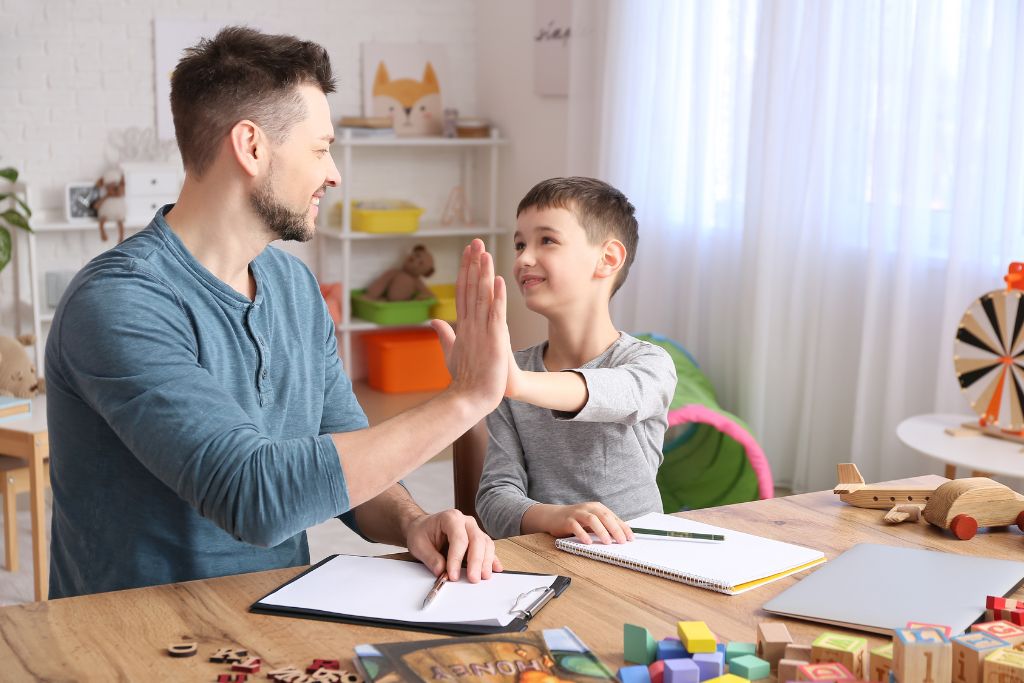A child’s behavior is shaped by his or her family in important ways. When it comes to food, clothes, and a place to live, a child’s basic needs rest on his or her family. A person’s behavior is affected by both their genes and their surroundings at home. Family influences on a child’s behavior can have a big effect on how they grow up. Families that are good to their kids and give them a good place to live are more likely to have good relationships with their kids. On the other hand, young people who come from bad family environments tend to feel more stress, anxiety, and depression, and do poorly in school. Research has shown that young children can change quickly.
Parental Influence
Parents have a big effect on their kids’ behavior and surroundings by setting patterns for them to follow. Parents who care about certain values and beliefs, like having a strong work ethic or wanting to live an honest life, are more likely to pass those values on to their children. Even when a child’s genes are taken into account, this can have a big effect in some situations, like when a parent does something bad.
It has been known for a long time that a child’s brain is especially malleable when they are young and that their social world gives them traits that will stay with them for life. For example, how a baby grows from sitting to crawling to walking, or how a person learns language from making simple one-word sounds to making full sentences.

Parenting studies generally employ longitudinal data to control a parent trait at the start and link it to a child’s behaviour later. Patterson and his colleagues discovered robust connections between elementary school parental authoritarianism and middle and high school antisocial conduct, even after controlling for genes and other risk variables.
Sibling Influence
Sibling relationships influence children and teenagers. Their importance in family life and sibling relationship quality is well documented. Siblings also influence conduct, with same-sex siblings modeling prosocial behavior better than opposite-sex siblings (Brim & Koch, 1960).
Research also shows that young children learn to play together by observing their older siblings interact. This observation leads to the socialization of the younger child, a process that enhances language development and understanding of other people’s perspectives and emotions.

Older siblings can mentor younger siblings or cause friction. Retaliation and threats are common among siblings (Patterson, 1984). Parents must stop this. Siblings should also learn dispute resolution from their parents.
Social Influence
Social influence refers to a change in thoughts, feelings, attitudes, or behaviors that stem from interaction with other people. Such influence can be exerted through conformity, persuasion, peer pressure, authority, or informational influence.
Some critics have said that the focus on parental influence has made people forget other sources of social influence that are just as important or maybe even more important. Children’s impact on their siblings is a good example. Traditional family studies have used simple first-order correlations to find weak links between parenting traits and children’s behavior. However, modern studies use a more thorough method that often includes multiple measurements of parents and children’s behavior in non-home settings.

This kind of study has shown that there are strong links between what parents do and how their children turn out. For instance, the Colorado adoption study showed that adopted children who had genes that made them more likely to act badly got negative training from their adoptive parents in ways that were influenced by their genes.
Environment Influence
Environmental factors affect child development. Poor housing and surroundings put children at risk of academic failure, behavioral issues, and psychopathology, according to research. Noise, overcrowding, and other physical variables can impact social, emotional, and cognitive development. Overcrowded households may distract youngsters from constructive play. Overcrowding is also linked to time spent with strangers, which can lower self-esteem and cause sadness.

Many academics previously believed that parents or other socialization factors “mold” or shape children to become the adults they want them to be (e.g., Bell, 1968). However, the recent realization that a bidirectional process is involved has made understanding children’s active engagement in creating their own and others’ lives increasingly vital.
“Family Effects on Child Behavior” is a thorough study that looks at how a child’s behavior is affected by his or her family. To learn more about how family factors can affect a child’s development, it is important to look into ways to turn failures into successes. “5 Tips for Turning a Fail Into a Success” is a good piece that gives helpful advice in this area. This article gives practical help and tried-and-true methods for getting over setbacks and turning them into chances to grow. By putting the ideas in this piece into practice, parents can help their kids deal with problems, build resilience, and, in the end, have a positive effect on their behavior.

